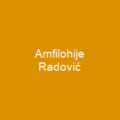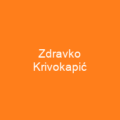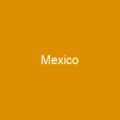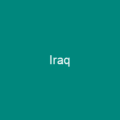Montenegro: A Country of Rich History and Diverse Culture
Montenegro, a country nestled in Southeastern Europe, is like a puzzle piece that fits perfectly into the complex map of the Balkans. Imagine a place where history whispers through ancient stones and modern dreams soar over rugged mountains—this is Montenegro.
A Historical Journey
Before the arrival of Slav peoples in the 6th and 7th centuries, this land was home to the Illyrians. Can you imagine the stories these ancient people might have told around their campfires? The region then saw a series of rulers—from Duklja and Travunia to the Nemanjić dynasty—each leaving its mark on the landscape.
The Slavs brought with them three principalities: Duklja, Travunia, and Raška. Duklja’s rise and fall mirrors the ebb and flow of power in this region, much like a river changing course over time. The kingdom eventually became part of the state ruled by Stefan Nemanja, setting the stage for centuries of political intrigue and conflict.
A Path to Independence
Montenegro’s path to independence was not without its challenges. From the Battle of Grahovac in 1858 to the recognition of Montenegrin independence in the Treaty of Berlin, each victory was hard-fought and hard-won. The country joined Yugoslavia after World War I but declared independence in 2006, marking a new chapter in its history. The name change from ‘Montenegro and Serbia’ to simply ‘Montenegro’ symbolized this transition, much like shedding old skin for something fresh.
Modern Challenges
Since independence, Montenegro has faced numerous challenges, including political instability and corruption. The government’s dominance by Milo Đukanović since the breakup of Yugoslavia has been marked by accusations of authoritarianism and clientelism. However, recent elections have shown a shift in power dynamics, with the opposition winning more votes than expected for the first time in three decades.
As Montenegro continues to navigate its path towards EU integration, it faces both opportunities and obstacles. The country’s journey is like a ship navigating through stormy waters, sometimes facing headwinds but always striving forward.
Nature’s Beauty
Montenegro’s natural beauty is breathtaking. 
The country’s climate is ice-eroded due to its western slope’s hyperhumid conditions, creating a landscape that is both challenging and beautiful. From the peaks of Bobotov Kuk to the serene Zeta River valley, Montenegro offers a diverse range of natural wonders.
Cultural Diversity
Montenegro’s cultural diversity is one of its greatest strengths. The country has no ethnic majority; Montenegrins make up 41.1%, Serbs 32.9%, Bosniaks 9.45%, Albanians 4.99%, and Russians 2.01%. This mix of cultures creates a vibrant tapestry that is both rich and complex. The coexistence of Christianity, Islam, and other religions in Montenegro reflects the country’s historical tolerance and acceptance of diversity.
Economic Growth
Montenegro’s economy is service-based and transitioning to a market economy. The country has free trade agreements with the European Free Trade Association and joined the Central European Free Trade Agreement, positioning itself for further growth. With its strategic location and natural resources, Montenegro has the potential to become a significant player in regional economics.
The tourism industry plays a crucial role, with over 1 million visitors in 2022 spending 12.4m nights. The coastline, with its ancient towns like Herceg Novi and Kotor, is a major draw for tourists seeking both history and natural beauty. Montenegro’s commitment to improving infrastructure to support tourism shows the country’s dedication to economic development.
A Future of Promise
Montenegro has come a long way since its independence, facing challenges but also achieving significant milestones. From joining NATO in 2017 to ongoing efforts towards EU integration, the country is on a path of progress and development. As Montenegro continues to grow, it does so with a sense of pride and purpose, much like a tree that grows stronger with each challenge.
In conclusion, Montenegro’s journey is one of resilience and determination. From its rich history to its diverse culture and promising future, this country offers a unique blend of the old and new. As it continues to evolve, Montenegro remains a beacon of hope for those seeking a place where tradition meets progress.
You want to know more about Montenegro?
This page is based on the article Montenegro published in Wikipedia (retrieved on January 2, 2025) and was automatically summarized using artificial intelligence.







